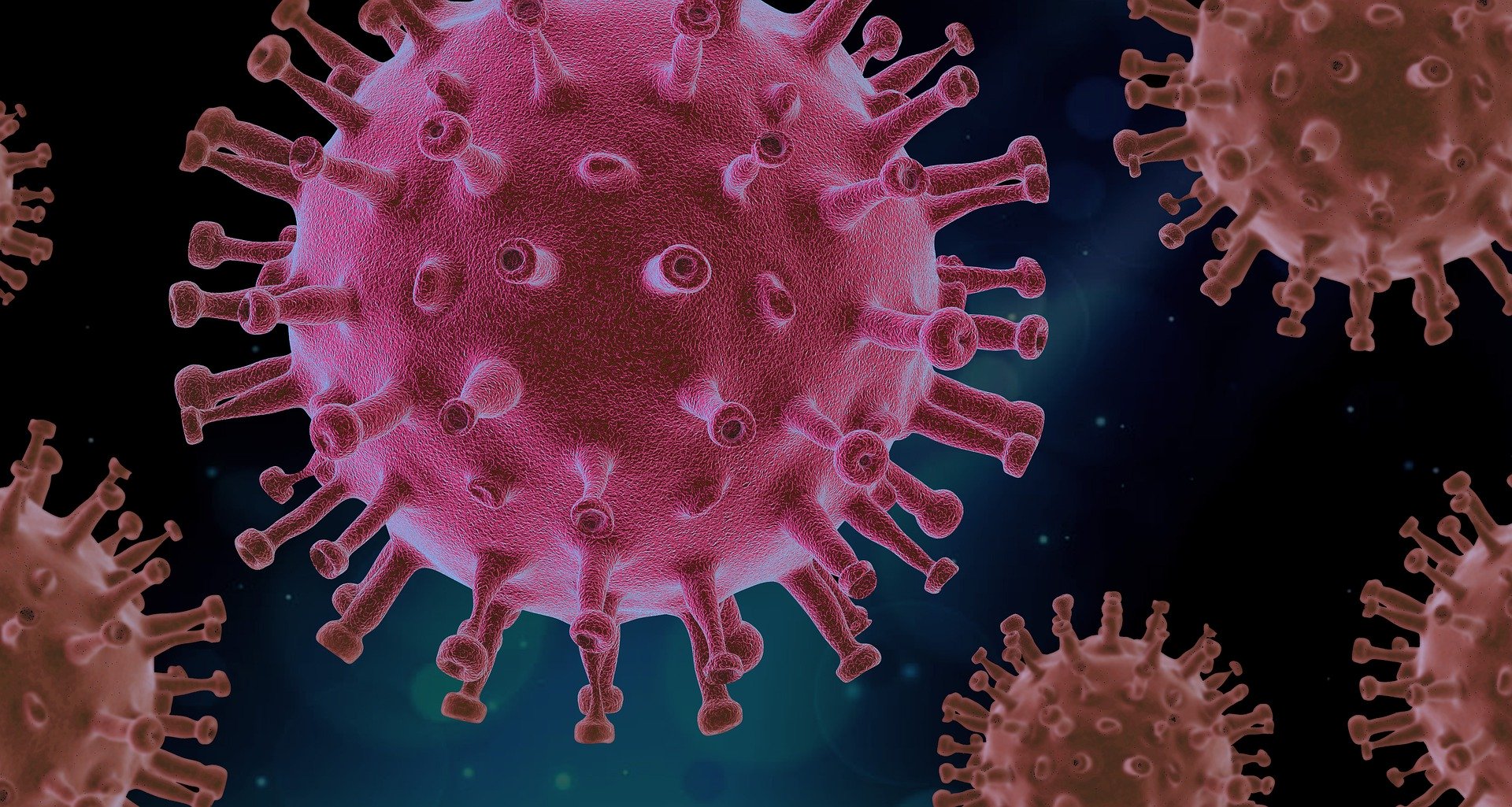
COVID-19 is caused by a coronavirus called SARS-CoV-2. Coronaviruses are a large family of viruses that are common in people and many different species of animals, including camels, cattle, cats, and bats. Rarely, animal coronaviruses can infect people and then spread between people. This occurred with MERS-CoV and SARS-CoV, and now with the virus that causes COVID-19. The SARS-CoV-2 virus is a betacoronavirus, like MERS-CoV and SARS-CoV. All three of these viruses have their origins in bats. The sequences from U.S. patients are similar to the one that China initially posted, suggesting a likely single, recent emergence of this virus from an animal reservoir. However, the exact source of this virus is unknown. There are many types of human coronaviruses including some that commonly cause mild upper-respiratory tract illnesses. COVID-19 is a new disease, caused be a novel (or new) coronavirus that has not previously been seen in humans. Many different types of diagnostic tests have been developed by health experts for coronaviruses which includes RT-PCR test, IgM/IgG antibody test, viral culture, and imaging.
WHO Recommended Screening Methods For COVID-19:
Diagnostic tests are performed on samples taken from the human body, such as swabs of mucus from inside the nose or back of the throat or blood from a finger prick or drawn by a phlebotomist to detect diseases or other conditions and can be used to monitor a person’s overall health to help cure, treat, or prevent diseases. Following tests are recommended by WHO and FDA for diagnosing patients with COVID-19.
Polymerase Chain Reaction (Real-Time RT-PCR)
It is a diagnostic test for detection of the virus and is a real-time reverse transcription–polymerase chain reaction (rRT-PCR) assay that can be used to diagnose the virus in respiratory and serum samples from clinical specimens. Scientists have found the highest rate of positivity at week one (100%), followed by 89.3% at week 2, 66.1% at week 3, 32.1% at week 4, 5.4% at week 5, and 0% at week 6. They also found that prolonged viral shedding occurred more often in older patients and in persons with comorbidities such as diabetes. These findings are important in terms of recurrent infections and positive PCR results following negative ones. RT-PCR tests positive for SARS-CoV-2 after apparently resolved COVID-19 (two negative PCR results consecutively, along with clinical improvement) have been reported. Various theories for these re-positive results have been reported, including inactivated viral RNA being detected or viral reactivation. Nonetheless, positive results following consecutive negative ones occurred after a relatively short interval, probably do not indicate reinfection, may not reflect infectious SARS-CoV-2, and were not accompanied by worsening symptoms. In a Korean study, all confirmatory viral cultures performed (108) were negative for SARS-CoV-2 in patients in whom PCR results were “re-positive,” and contact tracing revealed no new COVID-19 cases linked to these patients after initial resolution.
Antibody Test
The COVID-19 IgM IgG antibody test looks for the presence of IgM and IgG antibodies against SARS-CoV-2, which are specific proteins made in response to infections. Although antibody testing for COVID-19 is not currently recommended by WHO, however, it is a still a fast and effective way for screening large population and back-to-work test. COVID-19 IgM and IgG antibodies are detected in the blood of people who are tested after infection; they show an immune response to the infection. Antibody test results are especially important for detecting previous infections in people who had few or no symptoms. Qualitative immunoglobulin M (IgM)/immunoglobulin G (IgG) antibody tests for 2019 novel coronavirus, using serum, plasma, or whole blood can be performed with COVID-19 antibody rapid test kit to check past infection or recent infection with corona virus. The test is available in cassette format, or in a strip format.
In a study, scientists analyzed plasma from many patients with COVID-19 in recovery who experienced mild symptoms. They found that titers of neutralizing antibodies were different. Higher levels of antibody correlated with older and middle age and higher CRP levels at admission but negatively correlated with lymphocyte count at admission. It raised concerns about the development of lasting immunity after infection.
In another study, the seroconversion of specific IgM and IgG antibodies were observed as early as 4 days following symptom onset.
In patients with confirmed COVID-19, the sensitivity of IgM was found to be about 80 percent and specificity, 100. More information can be obtained from FDA’s FAQ about serology tests for coronavirus.
Viral Culture:
In patients with suspected COVID-19, virus isolation in cell culture or initial characterization of viral agents recovered in cultures of specimens is not recommended for biosafety reasons.
Imaging:
Characteristic imaging features on chest radiographs and computed tomography (CT) of people who are symptomatic include asymmetric peripheral ground-glass opacities without pleural effusions. The Italian Radiological Society is compiling an international online database of imaging findings for confirmed cases. Due to overlap with infections such as adenovirus, imaging without confirmation by rRT-PCR is of limited specificity in identifying COVID-19. A large study in China compared chest CT results to PCR and demonstrated that though imaging is less specific for the infection, it is faster and more sensitive.
Other Laboratory Findings in Patients with COVID-19:
Complete blood count shows Leukopenia, leukocytosis, and lymphopenia among early cases.
LDH and ferritin levels are commonly elevated.
Individuals who were hospitalized, older age, neutrophilia, and elevated lactate dehydrogenase and D-dimer levels increased the risks of ARDS and death.
The following categories of patients should be tested on priority basis:
- Critically ill patients
- Those people with fever or dry cough.
- Individuals with positive contact history.
- Immunosuppressed individuals with respiratory symptoms.
- symptomatic residents of long-term care and hospitalized patients not in the ICU.
- Patients with certain comorbidities (e.g., diabetes, COPD, CHF); pregnant women; and symptomatic pediatric patients with additional risk factors.
- Healthcare persons with positive contact history
Currently, diagnostic testing for SARS-CoV-2 infection can be conducted by the CDC, state public health laboratories, hospitals using their own developed and validated tests, and commercial reference laboratories.
The Specimens for corona virus testing should be collected from the nostrils and mouth especially the area around the tongue and throat and bronchial lavage can also be performed for more accuracy. Nasal swabs were found to contain the most virus.Upper respiratory tract specimens have been reported to contain a smaller viral load than lower respiratory tract specimens do. If PCR tests are negative for SARS-CoV-2 using upper respiratory tract specimens despite persistent clinical suspicion, the WHO recommends retesting using lower respiratory tract specimens.

